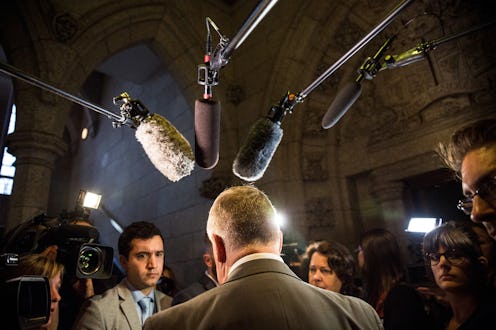
There are a lot of questions that remain unanswered in the wake of the Westminster attack, and, while we wait for more information, it's important to lean into what we do know. For example, what are gun laws like in London? According to reports, the attacker himself was wielding a knife, but he was shot by police. Police are authorized to carry firearms in the area, which has much stricter gun legislation than we do here in the United States. The biggest difference is that, in the U.S., gun ownership is an inalienable right, written directly into our Constitution. In the United Kingdom, it's a privilege, and one accorded to only a small fraction of the population.
In order to legally own a firearm in the U.K., you must apply to your local police force for a certificate licensing you to carry it. According to the most recent gun-ownership statistics released in June 2016 by the British Home Office, there were just 1,870,757 firearms and shotguns covered by such certificates at this time last year, which is actually a slight decrease from the year before. (There were nearly 15,700 fewer certificates issued for 2016 than for 2015, although the number of actual firearms covered by said certificates did increase incrementally.)
Taking into account the United Kingdom's population, that comes out to around 6.5 firearms per 100 residents, as compared to the startling American statistics of 101 firearms for the same sample size.
As Newsweek reports, many U.K.-dwelling certificate-holders live in rural areas and require the use of shotguns to protect their land holdings, which keeps firearms out of the hands of most city-dwellers. One exception to this rule, of course, is police officers, who are entitled, but not required, to carry a gun when on patrol. Although they are, of course, tasked with protecting the general population and authorized to use force when necessary, the Washington Post points to a 2004 survey indicating that nearly 82 percent of officers prefer to be unarmed when on patrol.
It might sound dangerous, but the same article quotes Greater Manchester Chief Constable Sir Peter Fahy, who insisted in 2012 that the policy doesn't result in the death of any more or fewer officers.
Sadly, we know from the experience in America and other countries that having armed officers certainly does not mean, sadly, that police officers do not end up getting shot.
Indeed, gun violence in the U.K. in general is kept to remarkably low levels. The BBC reported in January 2016 that gun-related incidents are responsible for just 10 percent of all homicides — as compared with 60 percent in the U.S. — and the Newsweek article cited above reports that firearms offense are responsible for just .02 percent of crime overall.
It's still extremely early, and information is both limited and conflicting. But, so far, that information does seem that the incident on Wednesday, when London police responded to a report of shots fired near the Palace of Westminster, where an officer was reportedly stabbed by an as-yet-unknown assailant, will likely contribute to the above statistics. That makes this the ideal time to educate yourself about the laws in London, and how these types of attacks are handled before the news cycle runs away with itself.